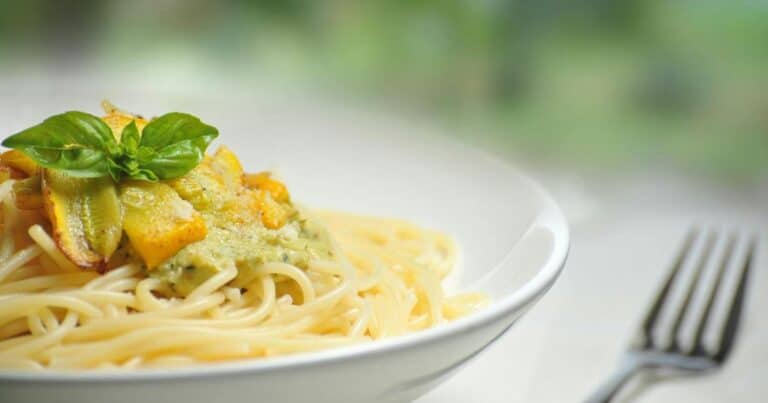
Did you know kids love sweet treats because they have more tastebuds than adults? For this reason, it is crucial to help your child manage their sweet tooth with healthy habits they can adopt for a lifetime.
It makes perfect sense that my kids adore sugary foods because even as an adult with less tastebuds, I love them!
However, having kids who take their sweet tooth too far is troubling, and there are some pronounced health risks, even at a young age, with all of the sugar and chemicals they are ingesting.
If your child adores their sugary snacks, you must step in early and manage it correctly so your kids can manage their food intake and have a healthy attitude.
See my tips below to help your child manage their sweet tooth.
Break the unhealthy routine
The first and possibly the most challenging part of managing sugar addiction is stopping it.
This means keeping sugary foods out of the house, like chocolates, candies, and donuts. Switch to unsweetened juices, plain yoghurt, plain oatmeal, and fresh produce instead of highly processed ones.
It’s time to stop ordering takeaway and to prepare as much food as possible from scratch, so you know exactly what your little ones are eating.
Identify unhealthy eating patterns and put a stop to them right away.
Model healthy eating habits
Kids are known to imitate the adults around them, so make sure that you practice healthy eating habits.
Let them see you drink lots of water, eat your fruits and veggies, and choose better snacks – and let them see you enjoying eating better food.
Even if they find healthy eating repulsive initially, seeing you loving what you eat can eventually influence their enjoyment of healthier eating habits.
Remember, the healthy eating habits you instil in your child today will last them a lifetime, so it is well worth the effort.
Offer alternative healthy snacks
A major reason kids develop a liking for sugary food is availability. If they see unhealthy snacks in your pantry or available to buy in the school cafeteria, that’s what they’ll gravitate to.
You can replace your snacks at home with trail mixes (ensure there’s no added sugar), mixed nuts, dried and fresh fruit, and homemade sandwiches.
Yes, it is a bit more effort (and cost) to look for and prepare healthier snacks, but it will be worth it when it comes to curbing your child’s sugar addiction.
Educate them
Find fun ways to share the benefits of healthy eating, the effects of too much sugar on their teeth, and how to make their favourite treats healthier.
If you have younger kids, head to your nearest public library and ask the librarian for storybooks on good eating habits. If they have a phone, you can also casually relevant share interesting social media posts with verified health information.
Sometimes, leaving leaflets around the house can help them “discover” these things independently.
Use sweet spices instead of sugar
Cinnamon, cardamom, and ginger – the trifecta of sweet spices – are just some of the spices that come to mind when I think of sweet, delicious sugar alternatives.
You can switch from sugar to this blend for your kids’ morning oats, popcorn, or stewed fruit. It might take some time for your kids to get used to this new taste, but if you persevere, they’ll not only eat it but love it!
Why use sugar when you can use spices that not only have more flavour but most have considerable health benefits?
Use portion control
I love Snickers and will be forever bummed if I suddenly can’t have one again.
I replace the regular-sized packs with bite-size ones and treat myself to one piece at the end of every other day.
Kids may find it challenging to go cold turkey when it comes to quitting sugar, so instead of eliminating their favourite sweets from their diet, why not use portion control? Instead of depriving them of a treat they love – which poses the risk of eating more of that later – reduce the amount they can eat and replace it with healthier alternatives.
Check for hidden sugars in food
Educate yourself on the different names for sugar and sugar alternatives you usually would not suspect as “unhealthy.”
Sometimes, marketers and food companies will try to circumvent the regulations and replace the term sugar with words regular people aren’t familiar with. High fructose corn syrup, fructose, dextrose, fruit juice concentrate, and ethyl maltol are other names for sugar in processed food.
If memorising these names is challenging, double-check the labels for ingredients with syrup or -ose in their name.
Make dessert healthy
I have developed a love of healthy baking.
For example, I use almond flour instead of regular flour for cakes and cookies. There are recipes where you can completely replace regular sugar with coconut sugar with a lower glycemic index or even date paste.
Thankfully, many healthy and yummy recipes are available on the Internet nowadays, so you don’t have to experiment with the ingredients and measurements to get the same results as conventional goodies. I find plant-based cookbooks to be a haven for healthi-fied desserts.
Eat together
Sharing the experience of enjoying healthy meals as a family encourages kids to improve their eating habits.
If eating all your meals together is impossible due to differences in schedules and commitments, set aside a regular family meal time at least a few times a week. Make sure your meal times are free from pressure and judgments to make this a time they can look forward to.
Aside from eating together, you can also prepare your meals together, which is another excellent way to entice children to like healthier ingredients like fruits and vegetables.













